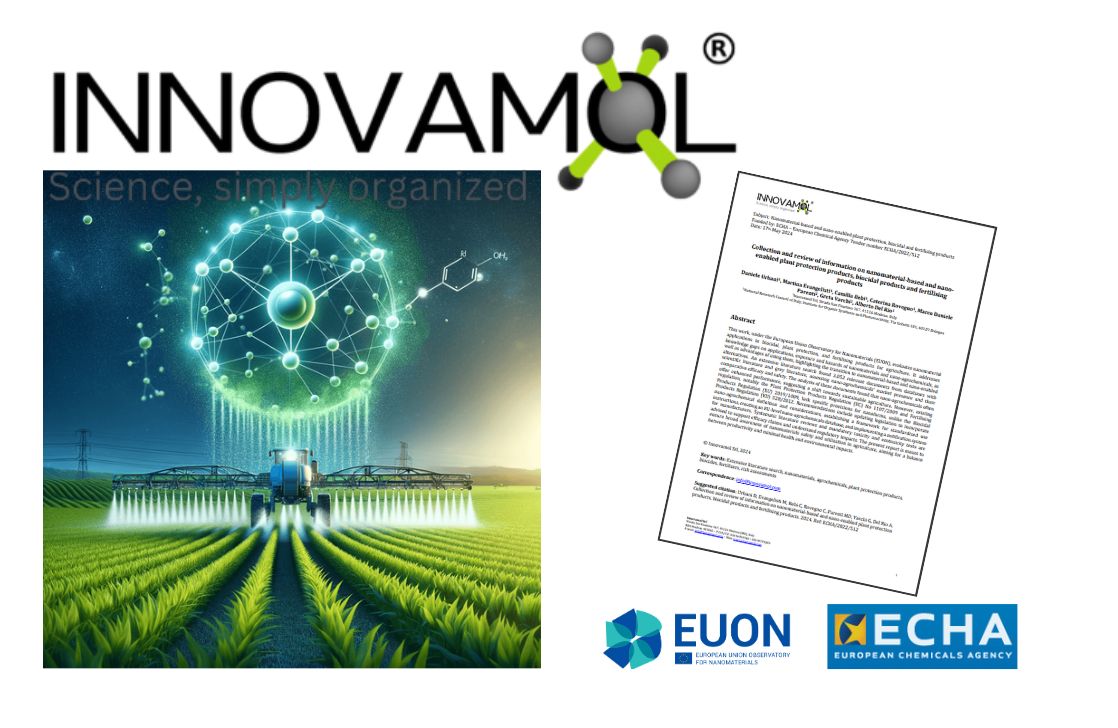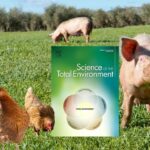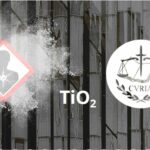
Nanos in agriculture: information still sorely lacking
A new expert report, asked for by our association AVICENN and published by the European Chemicals Agency (ECHA), confirms the lack of available data on nanos used in agriculture. The authors of the report, from the Italian company Innovamol, highlight the need to change European regulations in order to better identify, assess and manage nanos in the fields.
The origin of the report: a request by AVICENN
In 2022, the European Nanomaterials Observatory (EUON), linked to the European Chemicals Agency (ECHA), launched a call for topics in the field of nanomaterials. AVICENN, in partnership with other European NGOs1the Center for International Environmental Law (CIEL), ClientEarth, European Environmental Bureau and Health and Environment Alliance (HEAL) sent several proposals, including one on the use of nanos in pesticides and fertilizers (justified, among other things, by the very large number of publications on the subject, and by the fact that agriculture tops the list of sectors using nanomaterials every year2in terms of number of declarations registered in the French r-nano database).
In September 2022, we learned that our subject had been selected by ECHA. And a year later, in September 2023, that the Italian consultancy Innovamol had been commissioned to produce a review of literature on the subject and formulate recommendations. This company is specialized in the analysis and synthesis of scientific data using artificial intelligence (AI) and machine learning (ML).
→ Its final report, entitled Collection and review of information on nanomaterial-based and nanoenabled plant protection products, biocidal products and fertilizing products, was submitted in May 2024 to ECHA, which authorized its publication, six months later, on the EUON website.
A review of literature on nanos in plant protection products
Innovamol compiled 11,000 documents, of which over 3,000 were considered relevant and 1,872 were ultimately selected for analysis: these included scientific articles, patents, books, theses, institutional reports, web pages, forums, and more.
Additionally, Innovamol collected 75 contributions through a consultation that involved responses from around 60 researchers, including 5 chemical manufacturers, 4 regulatory agency representatives, and 6 NGOs, among them our own association, AVICENN.
According to Alberto del Rio, who led the study for Innovamol and with whom AVICENN communicated, the substances most commonly cited in scientific literature for agricultural applications are :
- metallic nanoparticles: silver, zinc, copper, iron
- silica nanoparticles,
- certain polymers and hybrids (e.g. Polycaprolactone: PCL), poly(lactic-co-glycolic acid: PLGA),
- carbon nanoparticles: graphene oxide, carbon dots, multiwall carbon nanotubes
- chitosan nanoparticles.
The (alleged) benefits of using nanos in agriculture are numerous, and mainly concern the improvement of :
- antifungal properties (e.g. copper nanoparticles, zinc oxide nanoparticles), disease resistance (e.g. silica nanoparticles),
- nutrient absorption (for iron and zinc nanoparticles),
- mechanisms for the controlled release of agrochemicals (nanovectors are designed to prolong the release of nutrients and pesticides, at lower doses that are claimed to be more effective and less harmful to the rest of the environment)
- plant defense (improved response to stress and resistance to pathogens through nanoparticle induction of antioxidant enzymatic activity and enhanced cell wall integrity)
- the biodegradability of certain components (with the use of biodegradable nanocomposites).
Nearly fifty pages provide a more detailed compilation of the scientific knowledge on various types of nanoparticles, their potential benefits in agriculture, and the associated risks.
The authors also highlight significant gaps in current understanding of both the marketing and use of nanomaterials in agriculture, as well as the potential human and environmental exposures and related hazards
In an AgraPresse article published at the same time as the report, Alberto del Rio regrets the “near-total absence of data available at the European level” and points out the fact that it is “very difficult to know whether a company is currently marketing products in nanoparticulate form”.
Very relevant recommendations
The report also provides an analysis of existing European regulations, and deplores the fact that they contain no specific provisions concerning nanos in pesticides or fertilizers. It points out that while Regulation (EU) 528/2012 makes (nano) labeling of nanomaterials in biocidal products mandatory, as well as a pre-market risk assessment, it does not apply to agricultural products. The latter are covered by Regulation (EC) 1107/2009 on plant protection products and Regulation 2019/1009 on fertilizers, neither of which takes into account the size of the particles used in pesticides and fertilizers (neither for active substances nor for co-formulants). And yet, for the same chemical composition, nanoparticles are more reactive than larger particles: their toxicity and eco-toxicity may therefore be greater. That’s why safeguards must be put in place.
The report’s recommendations in this respect are highly relevant. They highlight the need to :
- update European legislation to include a definition and specific considerations for nanomaterials in regulations on plant protection products and fertilizers
- establish a framework for standardized use instructions
- create a database of nanos used in EU agriculture and set up a mandatory notification system for manufacturers
- call for systematic literature reviews and mandatory toxicity and ecotoxicity testing to support efficacy claims and enable public authorities to fulfill their missions.
What’s next?
By a quirk of the calendar, Innovamol’s report was published exactly twenty years after the report Down on the Farm by the Canadian collective ETC Group, which called for a ban on the use of agricultural inputs containing nanos until the risks of these new products are properly assessed.
Although the Innovamol report presents things differently, its recommendations also show the need for a nano-specific assessment as a prerequisite for marketing authorization. What consideration will European authorities give to these recommendations? A meeting is scheduled at the European Chemicals Agency (ECHA) in the near future. To be continued, then!
Also worth noting: in France, two reports from the national health and safety agency (ANSES) are expected in 2025. One on nanomaterials in biocidal and phytopharmaceutical products, the other on improvements to be made to the French r-nano database so that authorities, professionals, and the public can have better visibility on the characteristics, volumes, locations, effectiveness, and risks of the concerned products. These reports should help raise awareness of the urgent need to improve knowledge about the nanomaterials in phytopharmaceutical products: more data must be required from manufacturers so that robust risk assessments can finally be conducted… without waiting another twenty years!

More information in our sheets
Other nano-related news
Next nano events

- Webconference for analysis laboratories, plant fertilizer manufacturers and distributors, public authorities…
- Moderated by David Krupka, nanotechnologies development manager at AFNOR Normalisation and Emilie Langlois-Bertrand, nantechnologies standardization project manager.
- In partnership with Armand Masion, CNRS Research Director, and Sandrine Mocoeur, Health, Safety, Environment and Quality Manager at SYNGENTA.
- This exchange will also be an opportunity to explore the creation of a national platform to identify standardization needs.
- Website: www.afnor.org/evenement/nanotechnologies-agriculture-cadre-pratique-responsable/
- 8th Congress of Occupational Medicine and Health (CNMST 2026)
- Theme 5: Emerging pathologies and risks, Mr Henri Bastos (ANSES), Pr Lynda Bensefa-Colas (AP-HP), Dr Catherine Nisse (CHU Lille)
- Website: www.medecine-sante-travail.com
- 20th meeting of the “nano and health” dialogue committee
- Organizer: ANSES
Notes and references
- 1the Center for International Environmental Law (CIEL), ClientEarth, European Environmental Bureau and Health and Environment Alliance (HEAL)
- 2in terms of number of declarations registered



